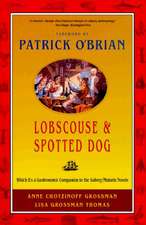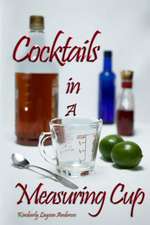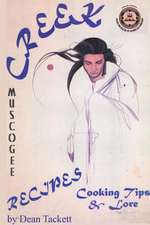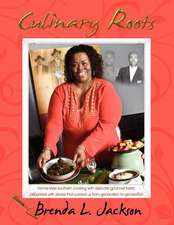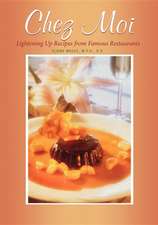Pickles: A Global History: Edible
Autor Jan Davisonen Limba Engleză Hardback – 14 iul 2018
From the fiery kimchi of Korea to American dill spears; from the spicy achar of India to the ceviche of Latin America; from Europe’s sauerkraut to brined herrings and chutneys, pickles are unquestionably a global food. They are also of the moment. Growing interest in naturally fermented vegetables—pickles by another name—means that today, in the early twenty-first century, we are seeing a renaissance in the making and consumption of pickles. Across continents and throughout history, humans have relied upon pickling to preserve foods and add to their flavor. Both a cherished food of the elite and a staple of the masses, pickles have also acquired new significance in our health-conscious times: traditionally fermented pickles are probiotic and said to possess anti-aging and anti-cancer properties, while pickle juice is believed to prevent muscle cramps in athletes and reduce sugar spikes in diabetics. Nota bene: It also cures hangovers.
In Pickles, Jan Davison explores the cultural and gastronomic importance of pickles from the earliest civilizations’ brine-makers to twenty-first-century dilettantes of dill. Join Davison and discover the art of pickling as mastered by the ancient Chinese; find out why Korean astronaut Yi So-yeon took pickled cabbage into space in 2008; learn how the Japanese pickle the deadly puffer fish; and uncover the pickling provenance of that most popular of condiments, tomato ketchup. A compulsively consumable, globe-trotting tour sure to make you pucker, Davison’s book shows us how pickles have been omnipresent in humanity’s common quest not only to preserve foods, but to create them—with relish.
In Pickles, Jan Davison explores the cultural and gastronomic importance of pickles from the earliest civilizations’ brine-makers to twenty-first-century dilettantes of dill. Join Davison and discover the art of pickling as mastered by the ancient Chinese; find out why Korean astronaut Yi So-yeon took pickled cabbage into space in 2008; learn how the Japanese pickle the deadly puffer fish; and uncover the pickling provenance of that most popular of condiments, tomato ketchup. A compulsively consumable, globe-trotting tour sure to make you pucker, Davison’s book shows us how pickles have been omnipresent in humanity’s common quest not only to preserve foods, but to create them—with relish.
Din seria Edible
-
 Preț: 83.70 lei
Preț: 83.70 lei -
 Preț: 83.84 lei
Preț: 83.84 lei -
 Preț: 83.07 lei
Preț: 83.07 lei -
 Preț: 82.54 lei
Preț: 82.54 lei - 7%
 Preț: 83.07 lei
Preț: 83.07 lei -
 Preț: 82.64 lei
Preț: 82.64 lei -
 Preț: 83.44 lei
Preț: 83.44 lei -
 Preț: 84.47 lei
Preț: 84.47 lei -
 Preț: 146.91 lei
Preț: 146.91 lei -
 Preț: 83.60 lei
Preț: 83.60 lei -
 Preț: 83.07 lei
Preț: 83.07 lei -
 Preț: 83.07 lei
Preț: 83.07 lei -
 Preț: 82.54 lei
Preț: 82.54 lei -
 Preț: 82.54 lei
Preț: 82.54 lei -
 Preț: 83.44 lei
Preț: 83.44 lei -
 Preț: 83.44 lei
Preț: 83.44 lei -
 Preț: 81.74 lei
Preț: 81.74 lei -
 Preț: 83.07 lei
Preț: 83.07 lei -
 Preț: 145.76 lei
Preț: 145.76 lei -
 Preț: 112.78 lei
Preț: 112.78 lei -
 Preț: 83.07 lei
Preț: 83.07 lei -
 Preț: 82.64 lei
Preț: 82.64 lei -
 Preț: 82.26 lei
Preț: 82.26 lei -
 Preț: 83.84 lei
Preț: 83.84 lei -
 Preț: 83.44 lei
Preț: 83.44 lei -
 Preț: 82.89 lei
Preț: 82.89 lei -
 Preț: 82.64 lei
Preț: 82.64 lei -
 Preț: 83.44 lei
Preț: 83.44 lei -
 Preț: 83.48 lei
Preț: 83.48 lei -
 Preț: 82.54 lei
Preț: 82.54 lei -
 Preț: 83.95 lei
Preț: 83.95 lei -
 Preț: 83.07 lei
Preț: 83.07 lei -
 Preț: 83.60 lei
Preț: 83.60 lei -
 Preț: 81.84 lei
Preț: 81.84 lei -
 Preț: 83.07 lei
Preț: 83.07 lei -
 Preț: 83.48 lei
Preț: 83.48 lei -
 Preț: 83.38 lei
Preț: 83.38 lei -
 Preț: 82.01 lei
Preț: 82.01 lei -
 Preț: 82.44 lei
Preț: 82.44 lei -
 Preț: 83.84 lei
Preț: 83.84 lei -
 Preț: 83.07 lei
Preț: 83.07 lei -
 Preț: 83.44 lei
Preț: 83.44 lei -
 Preț: 82.18 lei
Preț: 82.18 lei -
 Preț: 94.31 lei
Preț: 94.31 lei -
 Preț: 95.36 lei
Preț: 95.36 lei -
 Preț: 82.01 lei
Preț: 82.01 lei -
 Preț: 82.54 lei
Preț: 82.54 lei -
 Preț: 82.64 lei
Preț: 82.64 lei -
 Preț: 83.38 lei
Preț: 83.38 lei
Preț: 83.48 lei
Nou
Puncte Express: 125
Preț estimativ în valută:
15.98€ • 17.35$ • 13.42£
15.98€ • 17.35$ • 13.42£
Carte disponibilă
Livrare economică 01-15 aprilie
Livrare express 15-21 martie pentru 25.10 lei
Preluare comenzi: 021 569.72.76
Specificații
ISBN-13: 9781780239194
ISBN-10: 178023919X
Pagini: 176
Ilustrații: 50 color plates, 10 halftones
Dimensiuni: 121 x 197 x 15 mm
Greutate: 0.37 kg
Editura: REAKTION BOOKS
Colecția Reaktion Books
Seria Edible
ISBN-10: 178023919X
Pagini: 176
Ilustrații: 50 color plates, 10 halftones
Dimensiuni: 121 x 197 x 15 mm
Greutate: 0.37 kg
Editura: REAKTION BOOKS
Colecția Reaktion Books
Seria Edible
Notă biografică
Jan Davison lives and works in London. She is the author of English Sausages.
Recenzii
"Who doesn't love a pickle? Low in calories and packed with flavor, they simply make any meal yummier. A book to relish, this tiny tome chronicles the global rise of the humble pickle, which fueled workers who built China’s Great Wall, flew to space (with a Korean who brought kimchi along for the rocket ride), and is now touted as a cure-all for hangovers."
“Pickles aren’t simple, or so one learns after consuming just a few pages of Pickles. . . . There are quick pickles, pickle pickles and fermented pickles, not to mention dry salting and dry pickling with soybean paste or rice mold, ketchup, hot sauce—you get the idea. The fundamentals are simple: When the pH drops below 4.6, the acidic environment ‘prevents the growth of food-spoiling microorganisms and eliminates certain food toxins and pathogens.’ In other words, pickling preserves. And as with most cured foods, the results taste great, too. Pickles were common 4,000 years ago in Mesopotamia. Romans pickled whole fried fish in hot vinegar. The range of pickled foods extends from mushrooms in Russia, locusts in Persia and herring in Holland to bananas in the West Indies, lemons in North Africa and feta in Greece. In Japan, they quick-pickle chrysanthemums as a condiment. Who knew?”
"A perfectly pocket-sized pickle primer covering everything sour, from German sauerkraut to kosher dills to Latin American ceviche."
"The book is well-researched and thoroughly studied. . . . A mouthwatering account of pickle world, a delicious read for summer."
"Well researched, nicely illustrated, and embracing."
"Throughout human history and in regions across the globe, pickling has been used by various cultures and ethnicities as a method of food preservation and flavor enhancement. Accomplished by adding salt, brine, vinegar, and flavorings to vegetables, fruits, meat, and fish, pickling has lead to classics such as Korean kimchi, Dutch pickled herring, Eastern European salted meat and sauerkraut, Latin American ceviche and escabeche, and Kosher dill pickles. Fermentation by microbes such as Lactobacillus and Leuconostoc are responsible for the desired keeping qualities and distinctive flavor. In the United States and elsewhere, pickling is undergoing a renaissance as consumers are rediscovering the many health benefits of pickled foods. Resistance to infection, improved digestion, and other effects such as decreased risk for stomach cancer are all associated with the consumption of these prized delicacies. Included in this attractive, well-written, slim volume are pertinent illustrations, historic and modern recipes, selected references as well as relevant websites, and a useful index. This text is a worthwhile addition to food studies collections at all levels. Recommended."
"To me, a pedant and a purist, a pickle by rights ought to have gone through a proper fermentation. It might have been pasteurized afterwards and bottled, but at some stage it needs to have supported microbial activity. And yet, I don’t think of kombucha as pickled tea or yogurt as pickled milk. Maybe that’s because they aren’t salted. Just being boiled in vinegar or soaked in brine doesn’t qualify either, for me. Luckily Davison, author of Pickles: A Global History, has a much more open mind, which is great, because I learned a lot from her little book."

